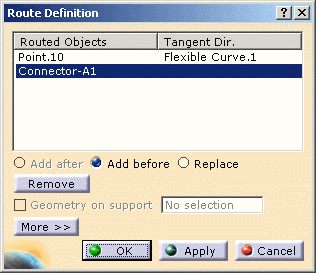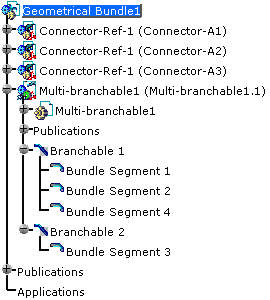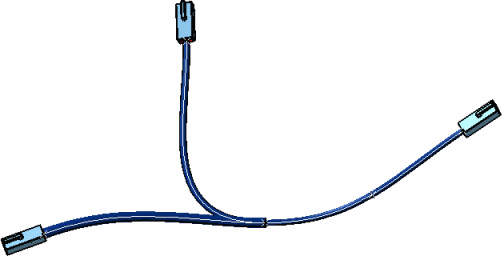This task shows how to split a branch into two. A new branch is created.
This operation may prove useful in the context of the
configuration management in ENOVIA: It allows you to prepare the transfer
of a branch to another multi-branchable document.
Refer to Split and Transfer Usage.
Create the necessary branches using the
DemoGS.CATProduct document.
It looks like this for example:
![]()
-
You are prompted to select the bundle segment in order to define the branch point on which you want to split. -
Select the bundle segment as shown below:
The branch point is highlighted and the Split dialog box opens: 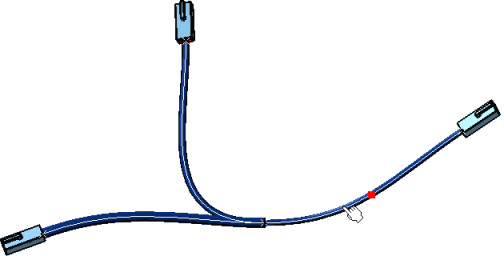
At this step, you can choose to split the branch at the highlighted branch point or to create a new one. 

- CATIA finds the closest branch point according to the selection point.
- In case there is no branch point available, CATIA proposes to
create a new one.

-
Keep the first option and click OK to validate.
A new branch is created (Branchable1.1) 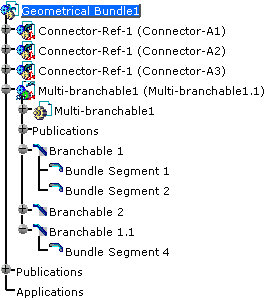
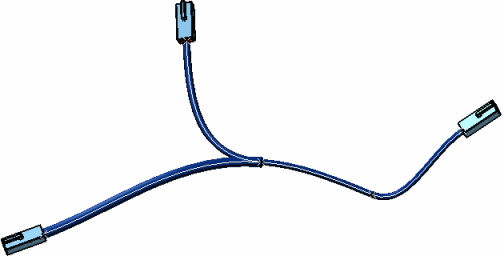
-
Alternatively select On a new branch point and click OK to validate.

You are prompted to select the bundle segment on which you want to create the branch point. -
Select the bundle segment as shown below:
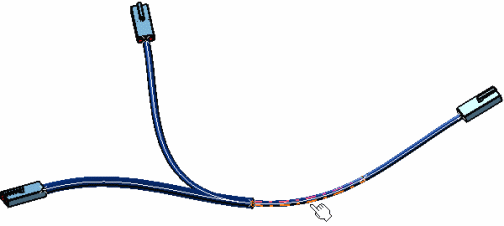
The dialog box opens: 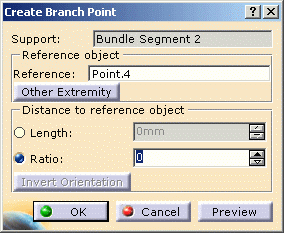
-
Enter 0.25 for example for the ratio and click OK to validate.
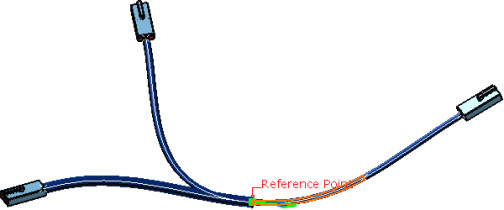
The result looks like this:
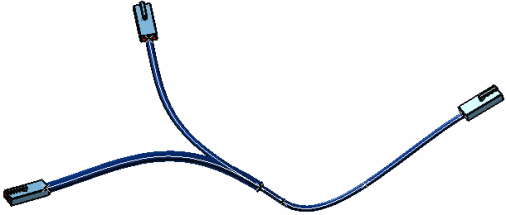
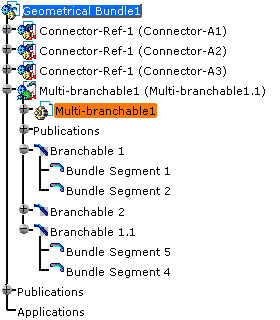
A new bundle segment (Bundle Segment 5) has been created in Branchable1.1.
How is it done?
- Before the split, the branch 1 (Branchable 1) is composed
of three segments between Connector-A3 and Connector-A1:
Specification tree corresponding to the following route definition 
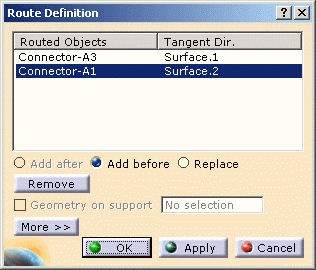
- During the split, the branch point is isolated from the flexible
curve (and becomes a point with coordinates: Point.10).
Branchable 1 is split into two branches:- Branchable 1, re-limited to Point.10 with two segments (Bundle segment 1 and Bundle segment 2)
- Branchable 1.1 created between Point.10 and Connector-A1 with two segments (Bundle segment 4 coming from Branchable 1 and a new Bundle segment 5).
Branchable 1 is tangent to Branchable 1.1 through its flexible curve.
Specification tree corresponding to the following route definition 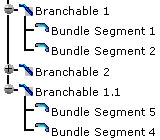
for Branchable 1: 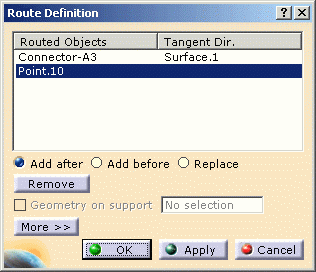
for Branchable 1.1: 